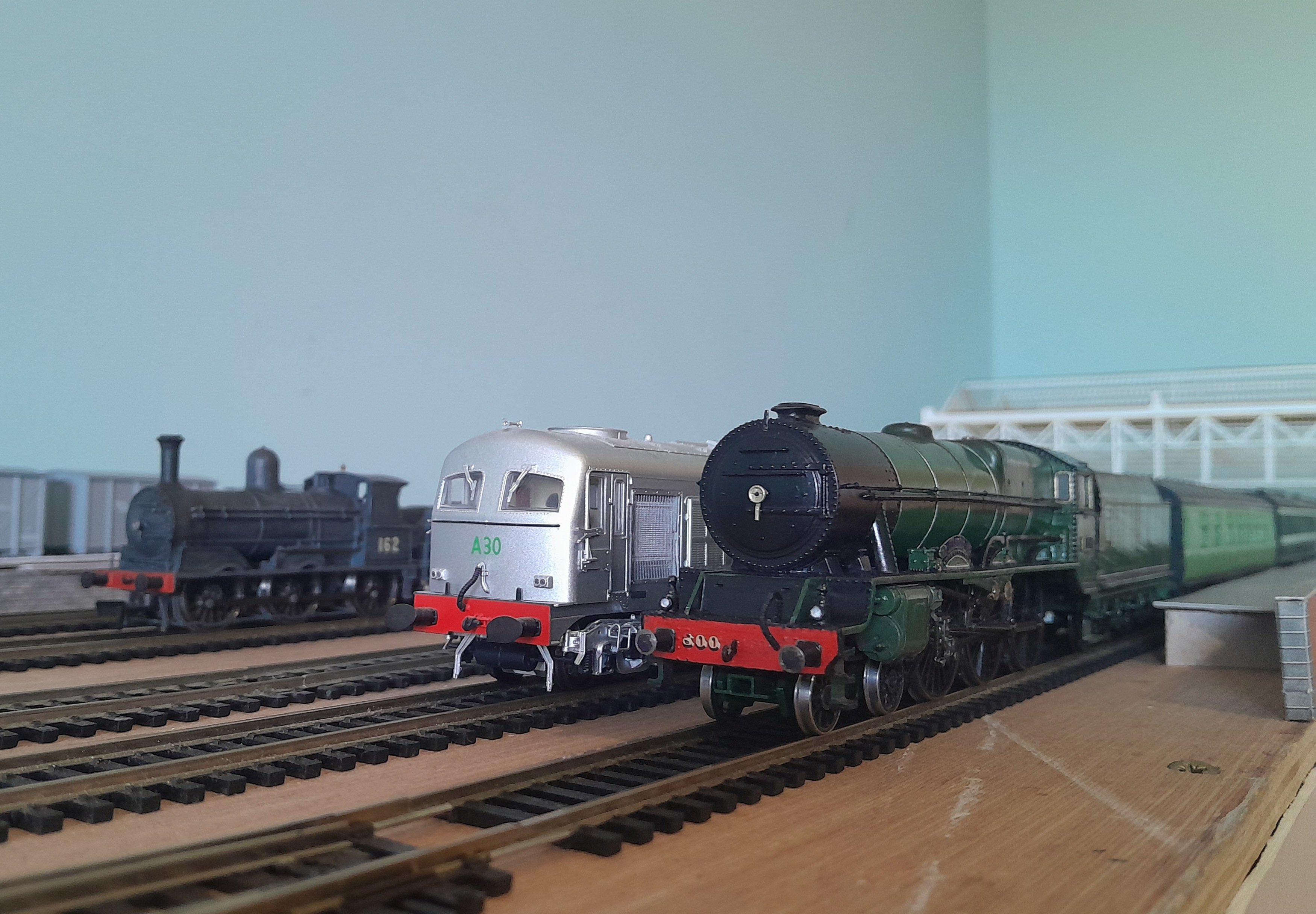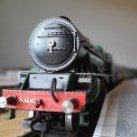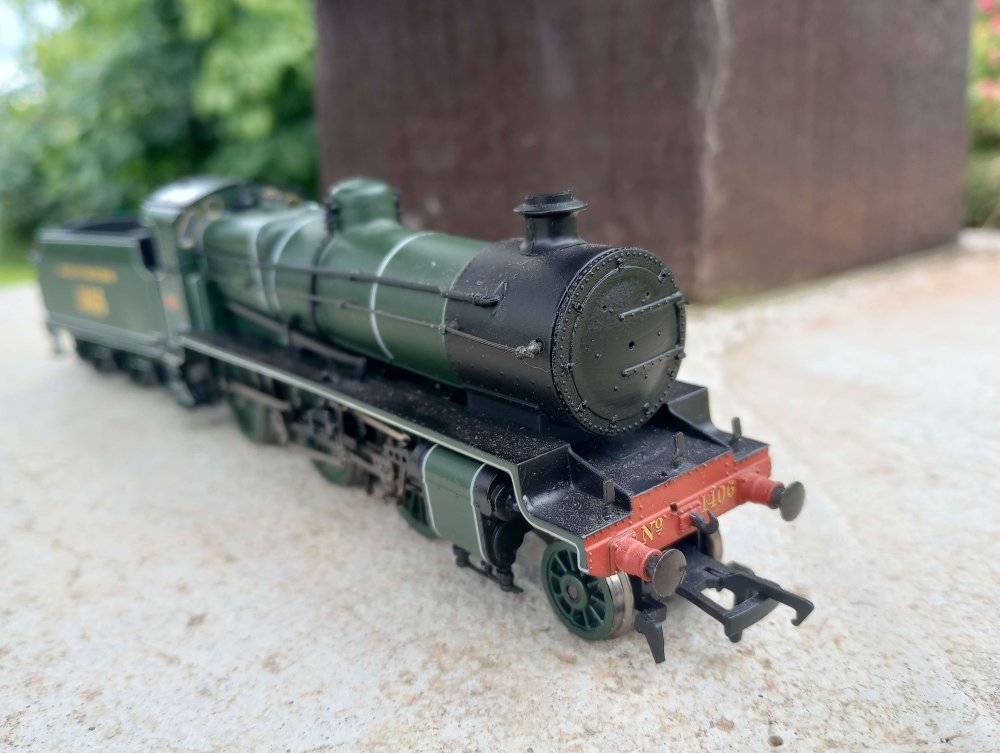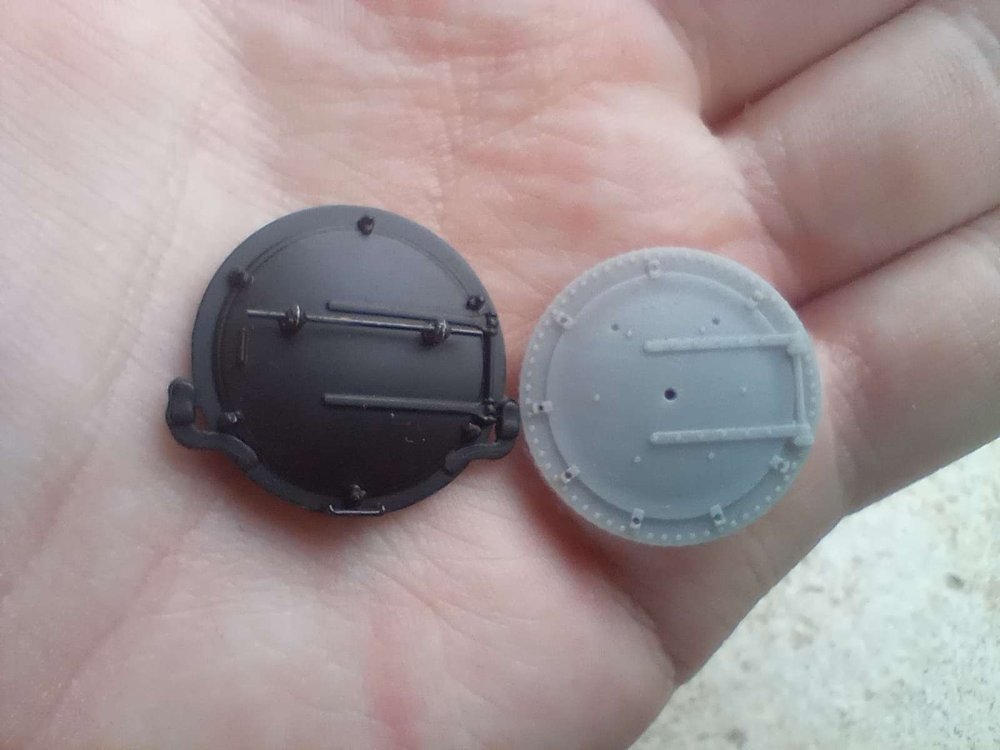-
Posts
1,795 -
Joined
-
Last visited
-
Days Won
8
Content Type
Profiles
Forums
Resource Library
Events
Gallery
Blogs
Store
Community Map
Posts posted by GSR 800
-
-
29 minutes ago, jhb171achill said:
Several points; after decades of conservative rule over thyere, gopvernment investments in any public infrastructure projects is not exactly littered with largesse; and in order to try to counteract conservative votes, like in many other countries, the parties who represented the left are veeriong more and more towards insipid silence, mediocrity, and hand-wringing; witness the Dems in the USA too, who are now considerably mo9re right-leaning than pre-Reagan republicans!
But to stick to the railway theme, the British still are "good" at railways, just perhaps not so much in some areas, though arguably a great deal better in others. None of the preceding posts are really about the railways themselves, or to back to topic, the Enterprise. Ever since railways had to be nationalised some 75 years ago, as a result of not being able to pay their way as businesses, they have been entirely dependent on state funding. Investment in railways, or lack of it, is a matter for a government - be it a British, Irish, EU or Timbuktooean one; rather than a lack of any will or skill within the railway itself.
A big problem you have is that the state has lost a lot of the wherewithal to build public infrastructure, having privatised everything during the neoliberal revolution of the 80s. You can see this here in Ireland. We're pretty good at building roads; there are always roads being built. But we haven't built big infrastructure projects like hospitals or railways, and so they often end up being expensive disasters with a great degree of rent seeking going on. Interestingly, Madrid built a metro system very successfully by effectively designing the construction around the election cycle so politicians could 'cash in' on various tranches of the metro being completed (say a section built every 5 years, lined up with election cycles). A pragmatic solution!
I'd argue the tide has shifted, at least in Britain (and many other European countries), toward the state having a more significant role in the ownership of public goods. The slow beginnings of this can be seen in the UK with renationalisation (the clunkily named Great British Railways) along with the constant backlash against private water, utility companies etc.
Britain suffers the pioneers curse. First to do it, stuck with ancient infrastructure (Same as ourselves!) and thus restricted by it. It comes with advantages of course, they have an enormous expanse of underground tunnels since the 1860s, whereas some 50 years after proposal, all we have to show for our metro is part of the airport designed to accommodate and 500 million euro spent on nothing.
Onto the Enterprise. The Belfast main line is one of, if not the busiest line in the country, with its southern terminus being the most busy station in the country. With major improvement works comes major delays, so on and so forth. Ultimately, I think they may have to just bite the bullet and go either quad track or with a separate HSR running in parallel. Both have advantages and disadvantages, but it certainly cannot continue as is. Widening the viaduct up towards Clontarf and onward would be a 19th century slightly suspect railway developers job!
The US is a different kettle of fish of course.
-
 3
3
-
-
11 hours ago, jhb171achill said:
There was even more to it today, but I didn’t want to labour the point!
Sooner both governments cough up for a complete new fleet, the better!
Tbh don't really understand the idea of an hourly Enterprise before gettin new sets in. Purely from a promo pov, you're offering the customer a very varied experience on a DD/ICR/CAF. The DDs and locos ain't getting any younger. Doubt we'll see them until 2030 though.
Perhaps a better alternative would be make the Enterprise non stop to say, Drogheda or Dundalk, and from there have a connecting ICR or CAF making the more regular stops. The morning Enteprise is used as a de facto commuter up and down the Belfast main line.
Nothing can be done about the DART problem until there's extra tracks to avoid them altogether.
-
 2
2
-
-
4 hours ago, jhb171achill said:
10:50 is an oul railcar. NIR thing, but at least it’s not a 29.
Glory to the 29s!
-
3003+3002 on 14.50 ex Connolly
-
-
1 hour ago, Killian Keane said:
I ran off a quick test print of the new smokebox door last night, Id consider that a success, it really does change the look of the loco (donor N class kindly loaned by @GSR 800)
Excellent work Killian, as always!
Really is transformative.
-
 2
2
-
 1
1
-
-
14.50 was NIR CAF 3003+3002
206 still on shed.
-
39 minutes ago, Blaine said:
Not really - how much are other things like Nintendo DS's, Playstations and Xboxes for 'younger buyers' these days?
Easy enough for manufacturers to judge and in many cases buyers too - example cant see the announced Murphy Models Dart Plus selling many, hence the IRM Hunslet is a 'one-off' and despite this being made very very clear there will be people in the future who regret not buying them at the time, or never even heard of them
How many people are buying several Playstations, Xbox, etc? Not really a good comparison. A PlayStation is more like buying a layout, ready to go. The games would be more akin to purchasing locos and rolling stock. From that POV the PlayStation looks like a very good deal indeed!
-
 2
2
-
-
3 hours ago, Ironroad said:
I think you missed me. I confirmed an interest with Killian last Dec and have a D16 waiting.
Hi Ironroad, not to worry, you haven't been forgotten!
The MGWR A class has been commissioned and is in the design stage.
The A class require smaller Hornby Princess Royal 6'6 driving wheels, which I purchased off Peters Spares and slot easily into place. Initially, I tried B1 driving wheels, which were more accurate, but these caused slipping.
This is a thread to gauge interest on the 400s, which would come after the MGWR loco is completed.
-
206 is spare in Connolly
-
-
1 hour ago, DoctorPan said:
Likewise, a yes for me.
2 hours ago, Flying Snail said:It's a yes for me (one).
Four confirmed then with my two, halfway there.
-
On 10/12/2024 at 11:50 PM, GSR 800 said:
John,
Your plans and advice have been invaluable, I'm happy to have one of your 650s, and my plans would stay plans without Killian's wizardry! The talent lies with him, and he puts up with my mad ideas!
I'm hoping my 650 will be complete shortly. Markits seem to be on hiatus. Other sources seem to be drying up also, quite difficult getting wheels for the 650.
D16/3 is indeed Hornby. The B1 drivers slot straight in, and have the same bearings and gear. The only thing that needs to be changed out is the crankpin, the geared set on the B1s has crankpins for walschearts, so Killian had the idea to pop them out and the ones from the old wheels were popped in.
Pickups were persuaded into place easily, was just a matter of trimming length off the brake shoes and the sand pipe.
Will have to change out that C for an A!
Using the B1 drivers unfortunately caused the loco to be a poorer puller than she had been. I replaced these with a Princess Royals 6'6 wheelset, which while less accurate, solved the issue.
With the Woolwich door complete, the A class is now next up.
-
After the MGWR A class, I'm considering commissioning a 400 class. This would be the split footplate version, meaning 401 (after 1949) 403, 405, 407 and 409 could be modelled.
402 had a flush footplate and 500 cab, whereas 406 had caprotti valve gear. 401 also had this until fitted with walschearts in 1949. So these two would be the only two the model wouldn't cover in the 1950s. 401 survived until 1961.
In terms of chassis, I may look to see if the Hornby Royal Scot would work with these. Alternatives would probably be B17s or King Arthurs. The Scot would be ideal as Killian has the chassis block modelled for it. They can also still be found for under 100 quid.
You would receive the loco body and tender, and the smokebox door handle. Killian offers to print the buffers AFAIK. Killian supplied nuts and bolts to fit the shells to chassis. Handrail fittings, handrails, whistle, safety valves, would likely be separate parts though some of these could probably be printed if necessary.
My intention for these would be to purchase two, possibly three. To justify making Killian endure the torture of designing something absolutely littered with snaphead rivets again, I'd be looking for a minimal order of 8 before going ahead and commissioning these.
With my two that'd be six other required before going ahead with these after the MGWR A class.
So if you're interested in a 400, do let us know!
"Those of us who saw the last agonies of steam felt deeply with Charlie Maguire, when, his voice breaking with emotion, bewailed the passing of many 'fine engines'
Charlie was thinking primarily of the 400 class, and of all engines I personally miss them the most."
Drew Donaldson, A Decade of Steam.
-
 1
1
-
-
15 minutes ago, Westcorkrailway said:
Infairness. Modern stations and stock don’t allow much for variety. For instance how many places had large and interesting layouts for them not to even have a loop in 2025. Equally how many of those places are exclusively served by an ICR and not much else. Even now, the days of 2 car railcar formations is coming to and end in the short/medium term
the late 50s-early 60s is the best era. Change my mind


Certainly the modern era is horrendously boring and sterile. For a bit of interest, you'd need a dcc sound decoder of some yahoo shouting abuse at security guards before buggering off on a scooter with the gear.
My interest is early 1950s CIE. Dieselisation is already making inroads through the AEC railcars, but steam still dominates, with the Enterprise connecting Cork, Dublin, and Belfast hauled by the apogees of CIE and GNRI steam. Within a few years, it would all be gone forever.
-
 2
2
-
 1
1
-
-
13 minutes ago, Killian Keane said:
Ive legitimately had a request for Dublin and Kingstown coaches recently so that shows you the mental space Im in lol
It is truly fascinating that many of our generation of modellers have turned toward a much earlier period to model after.
In many ways it makes sense, locomotives and rolling stock are smaller, making layout building somewhat more manageable. Many very obscure prototypes with all the elegance of victorian and edwardian design, and in some cases absolutely no elegance whatsoever!
I must confess I'm very partial indeed to the GNR Park J class 4-4-0s and JS singles of 1885, some of the most handsome locomotives to have ever run in this country.
-
 3
3
-
 2
2
-
 1
1
-
-
2 minutes ago, jhb171achill said:
I meant the GSWR 4.6.0........
I think anything post-1914 is modern!
I've considered commissioning 400s or 500s, but I'm sure Killian hopes I will start looking towards something like the old MGWR Grendon engine instead!
With the Woolwich smokebox door complete, the MGWR A class is now next in line.
-
 3
3
-
-
8 minutes ago, Westcorkrailway said:
I was looking at the 29k from my first class seat nervously….
what apeared to happen was they waited for the up Enteprise to arrive and nabbed the wiper off that since they had none spare in drogheada
Makes sense, surprised they didn't have it in Drogheda. They've a few in Connolly iirc, almost certainly in Belfast also.
-
5 hours ago, Westcorkrailway said:
To those who care about this sort of thing. My enterprise is currently on drogheada (we should have left Dundalk by now) due to a wiper blade coming off
Edit: We left at about 5 past 12.
at least the front didn't fall off
-
 1
1
-
 1
1
-
-
On 25/6/2025 at 11:38 AM, jhb171achill said:
Indeed; I share that concern. Despite good noises being made, freight facilities in Dublin have again been reduced, Taras have gone, and there’s even less left now.
And still not a syllable about Foynes.
Idk what the longterm plan is for North Wall but at least Dublin ports rail link will be reinstated after improvement works. I'm not very optimistic, but considering the likes of the foynes and the purchase of new wagons upcoming there must be something.
What I did not consider when I wrote that post is that they could always run freight at night on busier sections to avoid clashing with the commuter services. That'd be a return to form! I recall looking at the WTT for Mullingar back in the early to mid 20th century, the earliest train landed in at about 3am!
-
PM sent
-
4 hours ago, Mayner said:
Very unfortunate news, they were an excellent service. Will be gone in less than a week!
-
17 minutes ago, IrishTrainScenes said:
4 x 29000s (unconfirmed) worked 09.50 ex Dublin & 13.00 ex Belfast today. Possibly 11.50 & 15.00 also due to DD set AND an ICR Failure.
If ever the 29ks were given a nickname,maybe other than 'cheap as fuck' I think donkeys or mules would be apt
Workhorses of the railway, do everything and anything. Not at all 'glamorous' like the Mark 4s, DDs or ICRs, but usually show up when one of the latter two fails.
And of course they roar like donkeys!
A bit smelly too, just to add.
-
30 minutes ago, BosKonay said:
The site should show prices in Euro with ‘inc. vat’ appended. Where are you browsing from ? If the site can’t tell if you’re in the EU it will just show ex Vat and then add it on when you confirm your location.
Usually I see it like this, initially the price minus vat shows up then after a few seconds refreshes to full price
.png.c363cdf5c3fb7955cd92a55eb6dbbae0.png)









Irish Railway News ‘Enterprise Watch’
in General Chat
Posted · Edited by GSR 800
For Irish Rail, passenger numbers are booming. https://www.irishtimes.com/politics/2025/06/24/cie-passenger-numbers-climbed-to-pre-covid-high-during-2024/
https://www.irishnews.com/news/northern-ireland/belfast-to-dublin-train-numbers-jump-50-since-introduction-of-hourly-services-LIBSFAPPKBAIHFTKNONSBJYPPU/
Public transport as a whole has increased quite significantly: https://www.transportforireland.ie/news/its-thanks-a-million-from-nta-as-passenger-numbers-surge-to-a-new-high/
Every intercity train I've been on, no matter what the hour, has been near or at capacity, often crammed with people standing. IR has been trying to keep up with demand but the infrastructure bottlenecks are leading to delays. I think someone suggested terminating Sligo services at docklands, honestly may have to happen to relieve Connolly at some point to allow for improvement works.
The question of 'will this last' economically is always a wise one to consider, but despite 'work from home' commuting continues to rise and rise. Many in my generation would not want to work from home full time (I certainly would not!) Ultimately even if it all went tits up, the Belfast line will still need significant works as is.
My experience is not in infrastructure projects, but Irish Rail does a lot of refurbishment and improvement work in-house, with the assistance or inclusion of contractors. Other projects are left to contractors entirely. Like all things it comes down to finding good people to do the job.
I am far more optimistic about continued strong demand for rail transport across the nation than anything else. I am more pessimistic that infrastructure will be built to accommodate. A no-brainer would be double-tracking to Mullingar or even Longford. Delays at Maynooth and Killucan 'waiting in the loop' add an extra 10-15 minutes to every journey at least. Every bridge is built to accommodate it, though many of the rail bridges (over roads) were singled and would have to be replaced. No need for expensive land acquisitions.
With Dart+ West this will become even more necessary; you'll be stuck behind a Dart out as far as Maynooth, time will have to be made up thereafter. Perhaps someday the long-suffering Midland will get the love it deserves!